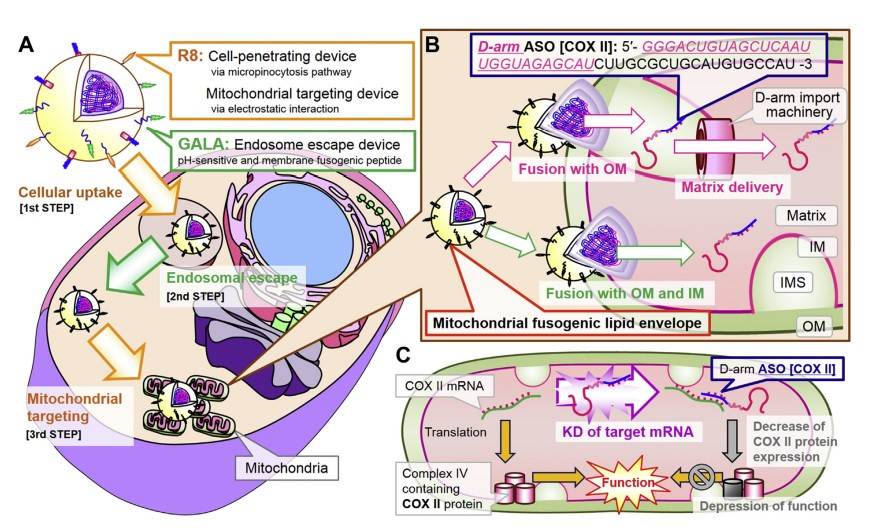Custom Mitochondrial Targeting Oligo Synthesis
Introduction of Mitochondrial Targeting Oligos
Mitochondria are essential for many biological processes, including energy production, metabolic regulation, and oxidative equilibrium. Dysregulation or disruption of mitochondrial activity has been related to the onset and progression of a variety of diseases, including mitochondrial diseases, neurological disorders, metabolic disorders, cardiovascular diseases, and cancer. Mitochondrial targeting of oligonucleotides involves the specialized design and modification of oligonucleotide molecules to allow for effective and selective entry into cellular mitochondria, where they exercise their effects. Mitochondrial targeting oligonucleotides have several key features, including:
- Design and Modification
The process entails inserting targeting signal sequences, such as mitochondrial protein targeting signals, to ensure that the oligonucleotide is recognized by the directed mechanisms within the mitochondria and effectively enters.
- Efficient and Selective Entry
Binding oligos with particular carriers increases their stability and membrane permeability, allowing for efficient and selective entry into mitochondria.
- Biological Effects
Once within the mitochondria, mitochondrial targeting oligos treat disorders caused by mitochondrial dysfunction.
Application of Mitochondrial Targeting Oligos
The use of mitochondrial-targeting oligos is widespread, including illness therapy, gene regulation, and cellular metabolism research. Figure 1 depicts the use of Mito-guided antisense RNA oligonucleotide (ASO) to target the mitochondrial genome and modulate mitochondrial activity. ASO targets cytochrome c oxidase subunit II, which is a component of the mitochondrial respiratory chain and enters mitochondria via the R8/GALA-modified MITO-porter system. MITO-porter is a nanoparticle with an inner core containing a transported drug and an outer layer consisting of a mitochondrial fusion layer and an endocytic fusion layer. After MITO-porter enters cells through endocytosis, the outer layer fuses with the endosome membrane and mitochondrial membrane respectively, carrying drugs into the mitochondrial matrix of living cells through membrane fusion. R8's role is to allow particles to be efficiently absorbed by cells by micropinocytosis. In mitochondria, ASO selectively knocks out the mRNA and protein of cytochrome C oxidase subunit II. At the same time, ASO depolarizes the mitochondrial membrane potential by down-regulating the respiratory chain.
 Fig.1 Schematic illustration of mitochondrial ASO delivery using the R8/GALA-modified MITO-Porter.1
Fig.1 Schematic illustration of mitochondrial ASO delivery using the R8/GALA-modified MITO-Porter.1
SERVICE
Creative Biolabs offers a variety of Mito-oligo synthesis services, including Mito-ssDNA, Mito-siRNA, and Mito-ASO. We also provide several delivery solutions, such as polymer, liposome, and LNP that can effectively deliver mito-oligos to the target location. For more extensive information, please contact us and request a price. We will contact you in time and design an ideal method for your job.
Reference
- Furukawa, Ryo, et al. "Mitochondrial delivery of antisense RNA by MITO-Porter results in mitochondrial RNA knockdown, and has a functional impact on mitochondria." Biomaterials 57 (2015): 107-115.
